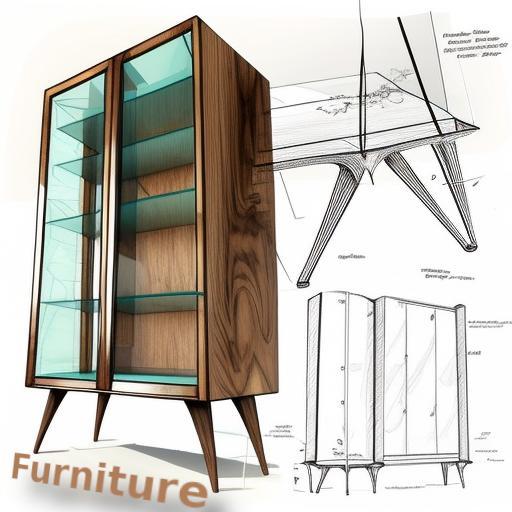


Furniture is more than just functional pieces within a space; it's an integral part of the aesthetics and functionality of our homes and workplaces. Navigating the world of furniture involves understanding design principles, considering functionality, and making choices that reflect your style. This comprehensive guide offers valuable insights and tips for choosing, arranging, and maintaining furniture to transform your space into a harmonious and inviting environment.
Define Your Style:
Before diving into the world of furniture, define your style preferences. Whether you lean towards modern, traditional, eclectic, or a blend of styles, understanding your aesthetic preferences will guide your furniture choices and create a cohesive look within your space.
Prioritize Functionality:
While aesthetics are crucial, functionality should not be overlooked. Consider how you use each space and choose furniture that complements your lifestyle. Opt for pieces with built-in storage solutions or convertible features to maximize functionality in smaller spaces.
Measure Your Space:
Before purchasing furniture, measure your space to ensure that each piece fits proportionally. Consider the scale of the room and the dimensions of existing furniture. This prevents overcrowding or leaving empty, awkward spaces, contributing to a well-balanced and visually pleasing arrangement.
Quality Over Quantity:
Invest in quality furniture that withstands the test of time. While budget considerations are essential, prioritize durability and craftsmanship. Well-made furniture pieces not only last longer but often come with warranties, providing peace of mind for your investment.
Mix and Match Styles:
Create visual interest by mixing and matching furniture styles. A harmonious blend of different styles can add character to your space. Experiment with combining vintage and contemporary pieces or incorporating eclectic elements for a personalized touch.
Consider Ergonomics:
When selecting furniture for workspaces or areas where you spend extended periods, prioritize ergonomics. Comfortable and supportive chairs, desks at the correct height, and well-designed workspaces contribute to both productivity and well-being.
Create Functional Zones:
Divide larger spaces into functional zones using furniture arrangements. Define areas for relaxation, work, and socializing by strategically placing furniture. This zoning approach adds structure to open-concept spaces, making them more inviting and purposeful.
Embrace Customization:
Explore customization options for furniture pieces, especially in areas where standard sizes may not fit perfectly. Many manufacturers offer customization, allowing you to choose materials, finishes, and dimensions that suit your specific requirements.
Lighting Matters:
Consider the impact of lighting on your furniture choices. Ensure that furniture placement takes advantage of natural light and that artificial lighting complements the overall design. Well-lit spaces highlight furniture details and create a welcoming ambiance.
Care and Maintenance:
Extend the life of your furniture through proper care and maintenance. Follow care instructions for materials such as wood, leather, and upholstery. Regularly clean and treat furniture surfaces to prevent damage and maintain a fresh, polished appearance.
Stay Informed on Trends:
While timeless pieces are essential for a lasting aesthetic, staying informed about current furniture trends can inspire updates and refreshes. Incorporate trending colors, materials, or design elements for a contemporary touch that complements your existing style.
Sustainable Choices:
Consider the environmental impact of your furniture choices. Opt for sustainably sourced materials, furniture made from recycled or upcycled materials, and brands committed to eco-friendly practices. Sustainable furniture choices contribute to a more responsible and environmentally conscious lifestyle.
The joinery and furniture business today consists of various types of companies, ranging from small, family-owned businesses to large multinational corporations. Here are some common structures of the joinery and furniture business:
Small and Independent Businesses: Many joinery and furniture businesses are small and independently owned, often operated by a single individual or family. These businesses may specialize in certain types of furniture or custom-made pieces and often have a strong focus on quality craftsmanship and customer service.
Custom Furniture Makers: Custom furniture makers typically create one-of-a-kind pieces of furniture for individual clients, often working directly with the customer to create a design that meets their specific needs and preferences.
Retail Furniture Stores: Retail furniture stores offer a variety of furniture pieces, ranging from traditional to modern, and may specialize in certain types of furniture, such as bedroom or dining room furniture. Many of these stores also offer design services to help customers create a cohesive look in their homes.
Wholesale Furniture Manufacturers: Wholesale furniture manufacturers produce furniture pieces in large quantities, often for retailers or other businesses to sell to consumers. These companies may specialize in certain types of furniture, such as office furniture or outdoor furniture.
Online Furniture Retailers: Online furniture retailers have grown in popularity in recent years, offering customers the convenience of shopping from home and often providing a wider selection of furniture pieces than traditional brick-and-mortar stores.
The joinery and furniture business is diverse, with a range of companies specializing in different types of furniture and serving different types of customers. However, quality craftsmanship and attention to detail remain important factors in the success of any furniture business, regardless of its size or structure.
There are many types of furniture in the market nowadays, each with its own unique style and purpose. Here are some of the most popular types of furniture:
Sofas and Couches: Sofas and couches are typically the centerpiece of a living room, and come in many styles, sizes, and materials.
Chairs: Chairs come in a wide variety of styles, from armchairs and recliners to dining chairs and accent chairs.
Tables: Tables are an essential part of any home, and come in many styles, including coffee tables, end tables, console tables, and dining tables.
Beds: Beds are available in many styles, from traditional to modern, and come in sizes ranging from twin to California king.
Storage Furniture: Storage furniture includes pieces like dressers, wardrobes, and cabinets, which are designed to help keep your home organized.
Desks: Desks are essential for anyone who works from home or needs space to study or do homework.
Outdoor Furniture: Outdoor furniture includes items like patio chairs, tables, and lounges, which are designed to be used in outdoor spaces.
Entertainment Furniture: Entertainment furniture includes pieces like TV stands and media consoles, which are designed to hold your television and other media devices.
Accent Furniture: Accent furniture includes pieces like ottomans, benches, and decorative chests, which are designed to add style and function to a room.
(!) There are countless variations and styles within each category.
Joinery products are items made by a joiner, a skilled craftsman who specializes in the production of bespoke wooden items. Joinery products are typically made from high-quality wood and are designed to be both functional and aesthetically pleasing. Here are some examples of joinery products:
Doors: Joiners can create custom-made doors, which can be designed to fit any size or shape of the door frame. They may include features such as paneling, intricate carvings, or glass insets.
Windows: Joiners can also create custom-made windows, which can be designed to fit any size or shape of the window frame. They may include features such as sashes, glazing bars, or decorative moldings.
Staircases: Joiners can create bespoke staircases, which can be designed to fit any space and style. They may include features such as handrails, balustrades, and newel posts.
Cabinets: Joiners can create custom-made cabinets, which can be designed to fit any space and purpose. They may include features such as shelving, drawers, and doors.
Furniture: Joiners can also create bespoke furniture pieces, such as bookcases, tables, and chairs. These pieces can be designed to fit a specific space and style and may include unique features such as intricate carvings or inlays.
Joinery products are high-quality, bespoke wooden items that are designed to be both functional and beautiful, and can add a unique touch to any space.
In recent years, there have been several innovations in joinery products and furniture that have transformed the way we design, manufacture, and use these items. Here are some examples of innovations in this field:
3D Printing: 3D printing technology has revolutionized the way furniture and joinery products are designed and manufactured. With 3D printing, it is now possible to create complex, customized pieces that would have been difficult or impossible to produce using traditional manufacturing methods.
Smart Furniture: Smart furniture is another innovation that has gained popularity in recent years. These pieces of furniture are designed to incorporate technology, such as built-in sensors, to make them more functional and responsive to the user's needs.
Sustainable Materials: As sustainability becomes increasingly important, more joinery and furniture manufacturers are using sustainable materials in their products. These materials include bamboo, recycled plastic, and reclaimed wood, among others.
Modular Furniture: Modular furniture is designed to be easily assembled and disassembled, allowing for greater flexibility and adaptability. These pieces can be easily reconfigured to meet changing needs and can be a great option for small spaces.
Mixed Materials: Mixing different materials, such as wood and metal or glass and concrete, has become a popular trend in joinery and furniture design. This approach can create unique and visually striking pieces that combine the best of both materials.
Navigating the world of furniture involves a balance of aesthetics, functionality, and practicality. By incorporating these tips into your decision-making process, you can transform your space into a curated and harmonious environment that aligns with your style and enhances your lifestyle. Embrace the opportunity to express your creativity through furniture choices, and let each piece contribute to the comfort and character of your home or workspace.
All the best,

We use cookies
We use cookies and other tracking technologies to improve your browsing experience on our website, to show you personalized content and targeted ads, to analyze our website traffic, and to understand where our visitors are coming from. Privacy Policy.